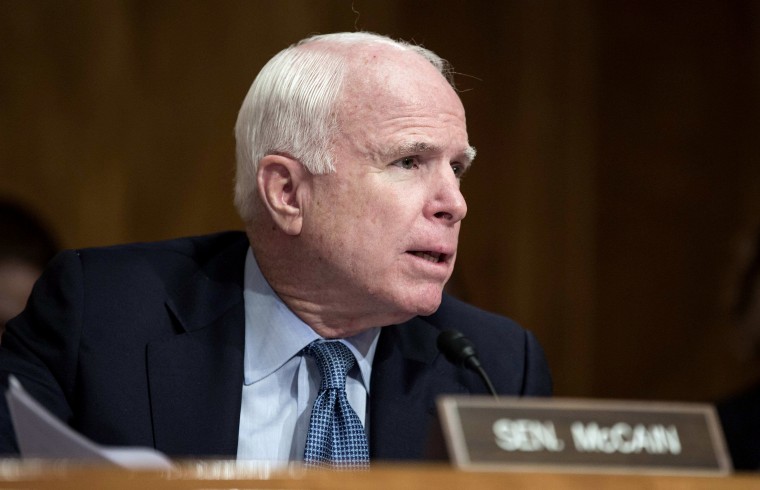It was just a few days ago when we learned about emails the White House sent to the U.S. Navy, directing military officials to move the USS John McCain "out of sight" ahead of Donald Trump's visit to Japan. In the days that followed, the reaction from the president and his team has followed a circuitous path.
The initial response from the Trump administration was surprise and incredulity. For his part, the president told reporters on Thursday, "I would never have done that," while insisting he wasn't directly involved. By the end of the day, Trump turned to Twitter to say, in response to the reporting, "Looks like the story was an exaggeration, or even Fake News."
Two days later, the Navy confirmed that the story wasn't "fake" at all.
The U.S. Navy has acknowledged that a request was made to hide the USS John S. McCain during President Donald Trump's recent state visit to Japan."A request was made to the U.S. Navy to minimize the visibility of USS John S. McCain, however, all ships remained in their normal configuration during the President's visit," Rear Admiral Charlie Brown, chief of information, said in a statement to NBC News.
The passive-voice phrasing -- a "request was made" -- downplayed the fact that the directive came from the White House.
All of which led to yesterday, when acting White House Chief of Staff Mick Mulvaney decided to embrace the central tenet of the report that his boss had denounced a few days earlier. This was the exchange yesterday morning between Mulvaney and NBC News' Chuck Todd on "Meet the Press":
TODD: Very quickly, are you confident that it was nobody in the White House or a White House advance-person that made the request to the Navy to cover up the U.S.S. John McCain?MULVANEY: Oh no, I absolutely believe it was probably somebody on the advance team.TODD: Are there any consequences for this?MULVANEY: Look, I'll answer your question. An advance team is hundreds of people. You know this better than anyone, you've been overseas with the president of the United States. The fact that some 23 or 24-year-old person on the advance team went to that site and said "Oh my goodness, there's the John McCain" we all know how the president feels about the former senator, maybe that's not the best backdrop, can somebody look into moving it. That's not an unreasonable thing to ask.TODD: Seriously?
The host's response, of course, was the appropriate one, but Mulvaney was not kidding. In fact, he made a similar pitch soon after on "Fox News Sunday," telling Chris Wallace the White House's directive was similar to arranging an office meeting and separating two people who don't get along.
So to recap, Donald Trump is such a delicate snowflake that the White House directed the U.S. Navy to move a warship so the president wouldn't have to see the name of a deceased American hero.
Team Trump initially denied the story, then confirmed it, then called it "fake," then confirmed it again, then dismissed its significance by defending the president's contempt for the late senator.
This, according to the White House, is "reasonable."
